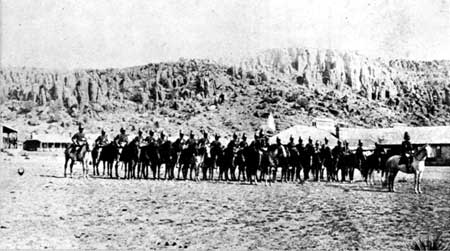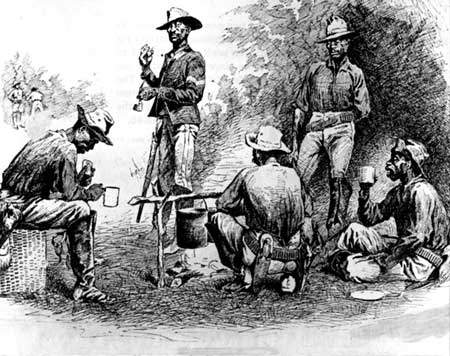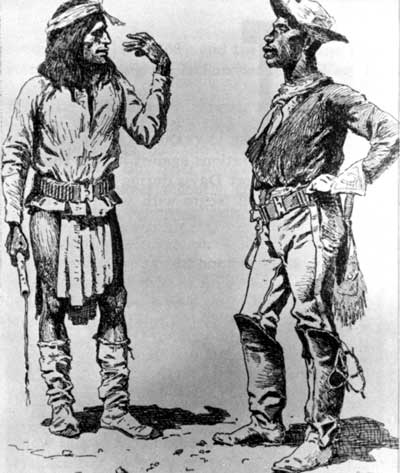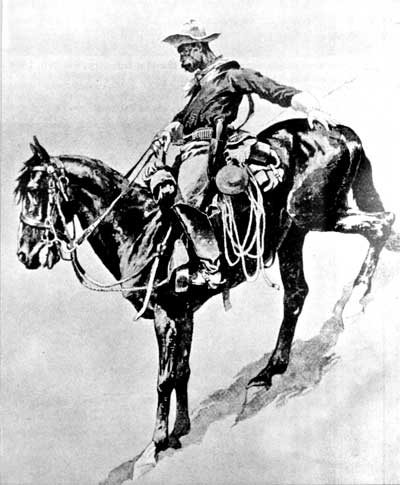|
FORT DAVIS National Historic Site |
 |

A troop of the 9th Cavalry arrayed in dress uniform.
National Archives
Buffalo Soldiers
At the close of the Civil War Congress authorized the formation of Regular Army units composed of Negro soldiers with white officers. There were to be two cavalry and four infantry regiments, but in the reorganization of 1869 the number of infantry regiments was reduced to two. Recruited from southern plantations and from the ranks of the Negro volunteer units that had fought in the war, the 9th and 10th Cavalry and the 24th and 25th Infantry served continuously on the western frontier throughout the remaining three decades of Indian hostility. In Indian Territory, the Dakotas, Colorado, Montana, Texas, New Mexico, and Arizona, the Negroes clashed with Cheyennes, Sioux, Arapahos, Kiowas, Comanches, Utes, and Apaches. Observing the kinky hair of their adversaries, the warriors dubbed them "Buffalo Soldiers." With a pride in the uniform, an individual morale, and a unit espirit surpassed by few regiments, the Buffalo Soldiers compiled a notable record on the Indian frontier.

A Campfire Sketch
Artist Frederic Remington was fascinated by the Buffalo Soldiers, as these illustrations reveal. Campaigning with them in Arizona, he wrote:
The Negro troopers sat about, their black skins shining with perspiration, and took on interest in the matter at hand. They occupied such time in joking and in merriment as seemed fitted for growling. They may be tired and they may be hungry, but they do not see fit to augment their misery by finding fault with everybody and everything. In this particular they are charming men with whom to serve. Officers have often confessed to me that when they are on long and monotonous field service and are troubled with a depression of spirits, they have only to go about the campfires of the Negro soldier in order to be amused and cheered by the clever absurdities of the men. . . . As to their bravery: "Will they fight?" That is easily answered. They have fought many, many times. The old sergeant sitting near me, as calm of feature as a bronze statue, once deliberately walked over a Cheyenne rifle pit and killed his man. One little fellow near him once took charge of a lot of stampeded cavalry horses when Apache bullets were flying loose and no one knew from what point to expect them next.

The Sign Language

A Study in Action
In these sketches for the Century Magazine,
April 1889, Remington has vividly recorded the life of Negro troopers in the
Southwest.
Denver Public Library

|
|
Last Modified: Fri, Oct 18 2002 10:00:00 pm PDT |


